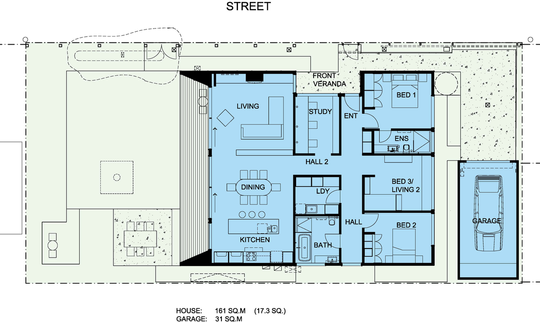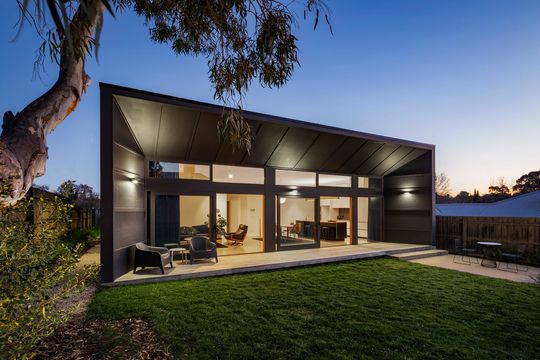When thinking about how to create a sustainable and affordable home, the 1960s-era fibro beach shack was the perfect inspiration, even kilometres from the beach in very inland, Castlemaine!
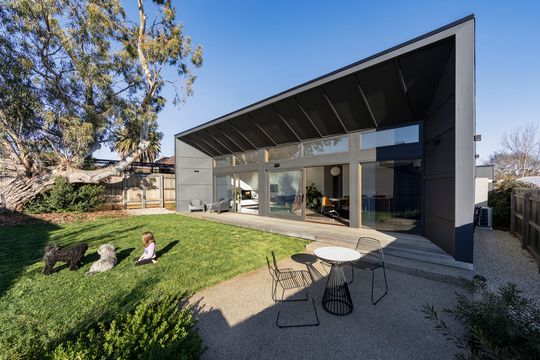
Adam Dettrick Architects chose to use fibre cement for the new home which is light-weight, easy to work with and cost-effective. It's also asbestos-free these days, thank goodness! "Combined with thermal mass, perfect orientation and loads of insulation, Fibro House offers a very comfortable energy rating of 8 stars", explains Adam.
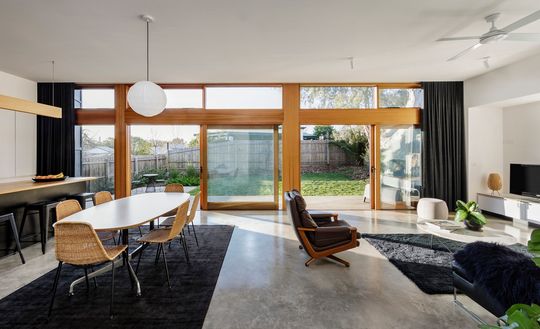
The home is a flexible 3-bedroom plus study design which Adam says is the most popular house size and is most flexible for different life stages. Feeling neither too big, nor too small, you could say it's the Goldilocks size; it's just right. The flexible plan means the home can function as a 3-bedroom, one living area, a 2-bedroom, two-living area, or even a 4-bedroom home if you include the study as well. It's clear that an average-sized family could live in this home and it would be capable of adapting to their needs as time goes on. The home is even suitable for aging in place, following the Livable Housing Australia to achieve a design suitable for all ages and abilities.
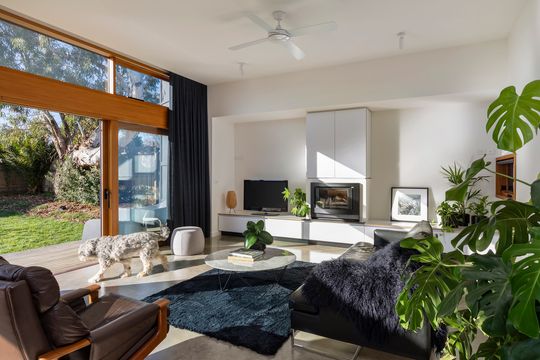
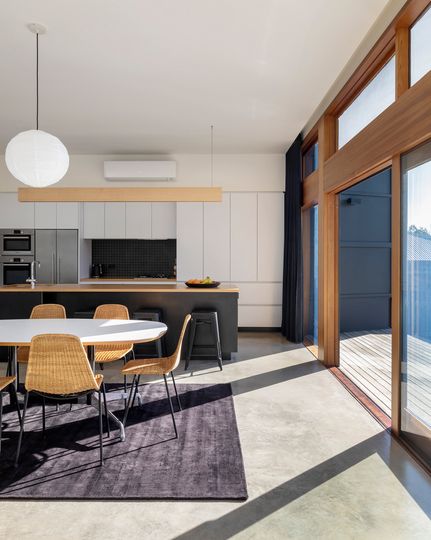
The living areas open onto a generous north-facing garden with expanses of glazing protected by an awning that is angled and sized to let in all the winter sun while blocking the summer sun. Burnished concrete floors are ready to soak up the heat of the sun for continued warmth or, conversely, can cool down on a cool summer evening and remain cooling throughout the day.
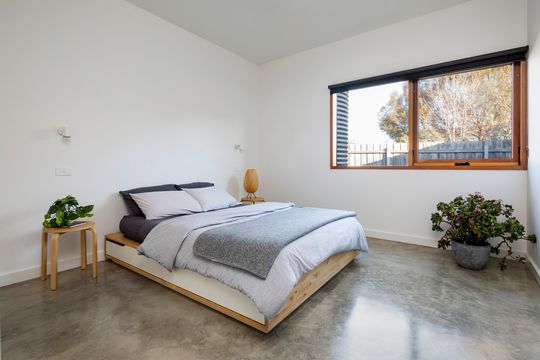
Castlemaine is a notoriously chilly place in winter, but thanks to its energy efficiency and passive solar design, Fibro House stays comfortable. Adam says, "on a chilly 6-degree Castlemaine afternoon Fibro House was 19 degrees inside, with no heating on." Pretty impressive! And in summer, it keeps its cool. "For those punishing Castlemaine summer days, all you need to do is open the highlight windows overnight and let the cool night air reset the house for the next day."


Adam says the key objective of Fibro House was to "provide an example of how sustainable, quality design doesn't need to be expensive." With a flexible floorplan that's just the right size for its owners, a passive solar design and energy-efficient envelope that barely requires active heating or cooling and cost-effective materials and construction, Adam Dettrick Architects has nailed it. Bring back the '60s fibro for modern living, we say. As long as they're designed for climate and energy-efficient, that is!
